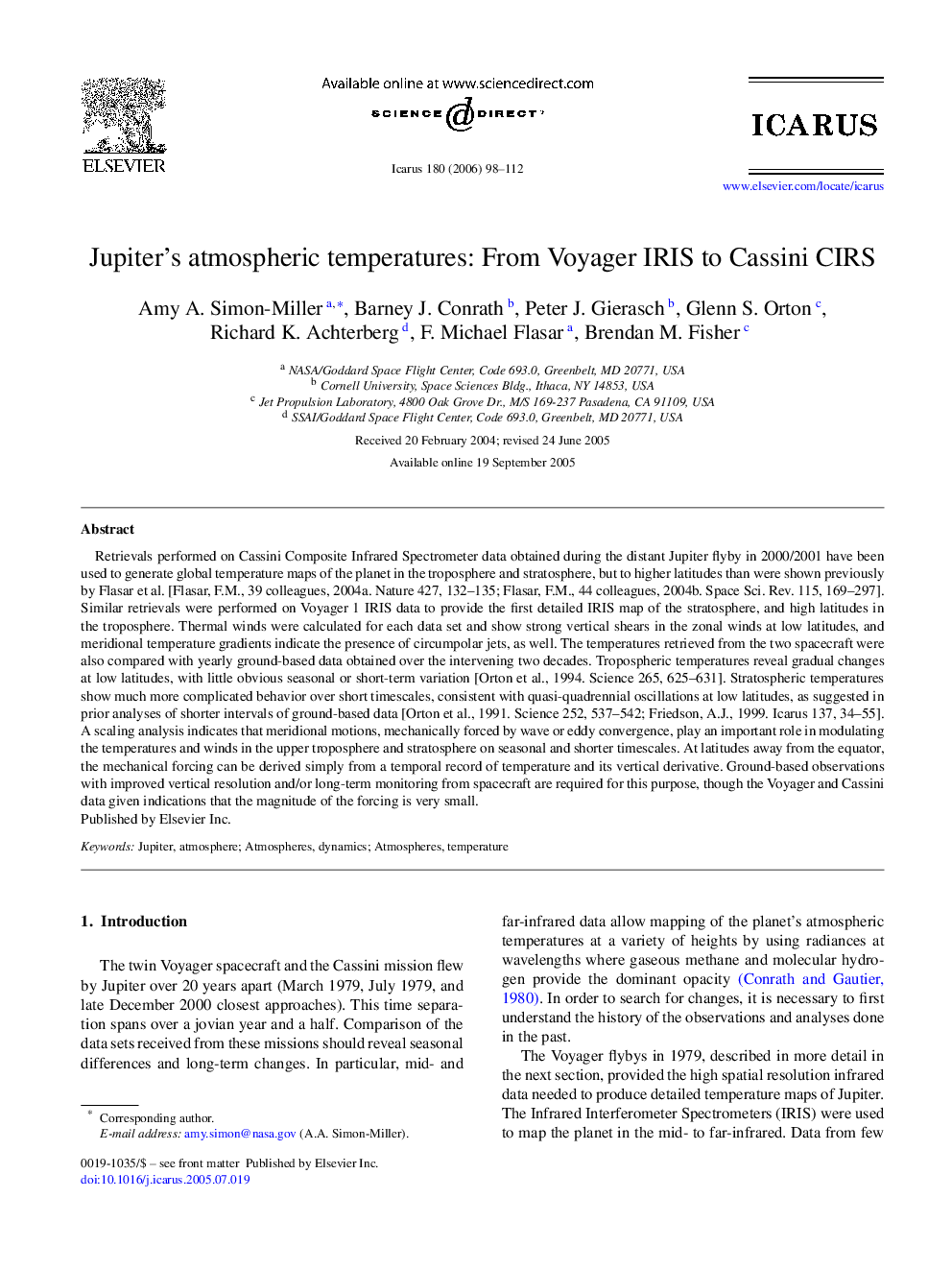| کد مقاله | کد نشریه | سال انتشار | مقاله انگلیسی | نسخه تمام متن |
|---|---|---|---|---|
| 1776022 | 1021216 | 2006 | 15 صفحه PDF | دانلود رایگان |

Retrievals performed on Cassini Composite Infrared Spectrometer data obtained during the distant Jupiter flyby in 2000/2001 have been used to generate global temperature maps of the planet in the troposphere and stratosphere, but to higher latitudes than were shown previously by Flasar et al. [Flasar, F.M., 39 colleagues, 2004a. Nature 427, 132–135; Flasar, F.M., 44 colleagues, 2004b. Space Sci. Rev. 115, 169–297]. Similar retrievals were performed on Voyager 1 IRIS data to provide the first detailed IRIS map of the stratosphere, and high latitudes in the troposphere. Thermal winds were calculated for each data set and show strong vertical shears in the zonal winds at low latitudes, and meridional temperature gradients indicate the presence of circumpolar jets, as well. The temperatures retrieved from the two spacecraft were also compared with yearly ground-based data obtained over the intervening two decades. Tropospheric temperatures reveal gradual changes at low latitudes, with little obvious seasonal or short-term variation [Orton et al., 1994. Science 265, 625–631]. Stratospheric temperatures show much more complicated behavior over short timescales, consistent with quasi-quadrennial oscillations at low latitudes, as suggested in prior analyses of shorter intervals of ground-based data [Orton et al., 1991. Science 252, 537–542; Friedson, A.J., 1999. Icarus 137, 34–55]. A scaling analysis indicates that meridional motions, mechanically forced by wave or eddy convergence, play an important role in modulating the temperatures and winds in the upper troposphere and stratosphere on seasonal and shorter timescales. At latitudes away from the equator, the mechanical forcing can be derived simply from a temporal record of temperature and its vertical derivative. Ground-based observations with improved vertical resolution and/or long-term monitoring from spacecraft are required for this purpose, though the Voyager and Cassini data given indications that the magnitude of the forcing is very small.
Journal: Icarus - Volume 180, Issue 1, January 2006, Pages 98–112